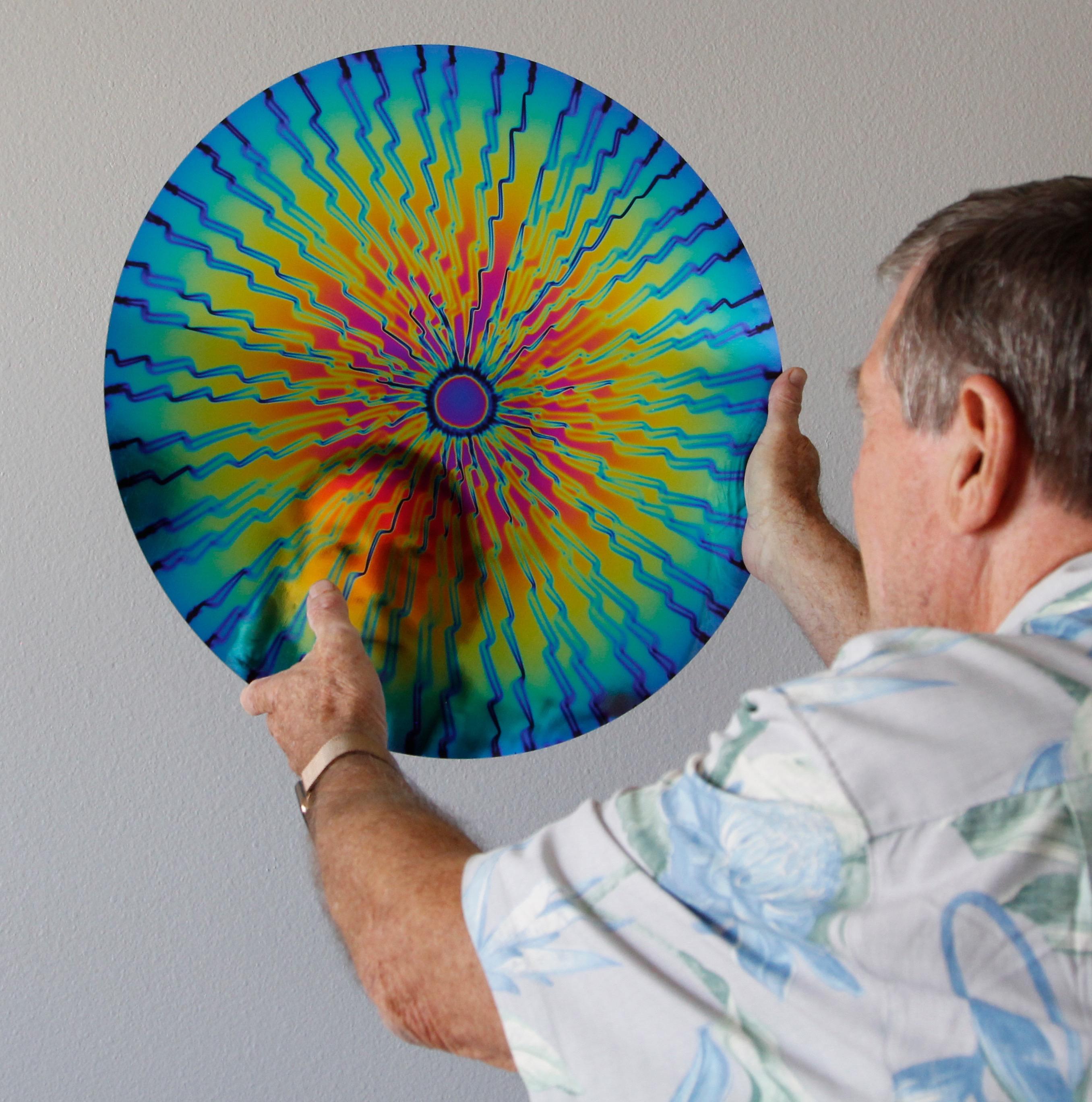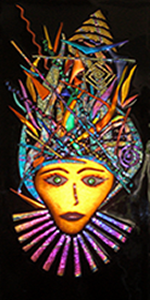
About the Art

Ken's Artwork is always evolving as he is continually searching for new things to try. Each piece is a one-of-a-kind; no two pieces are ever the same. Pieces range from unique jewelry to large wall mounted pieces. Ken is one of the few artists worldwide making large dichroic glass artwork, mostly due to the high cost of dichroic glass.
Dichroic Glass

Amazingly, dichroic glass does not have any physical color, paint, pigments, dyes, or gels to create its color anymore than a prism or rainbow does. The vibrant colors you see are a result of research carried out by NASA and the aerospace industry. The color you see on the glass is created soley through the manipulation of light by a dichroic filter created on the glass. This multi-colored effect is the result of complex light interactions called "thin film physics."
Ultra-thin layers of metals such as gold and silver, metal oxides such as titanium, aluminum, and magnesium, as well as silica and quartz are vaporized by an electron beam in a vacuum chamber. The vapor then condenses on the surface of the glass, which is mounted in the chamber, in the form of a crystal structure. By careful control in number and thickness of the layers, different colors are created even though the exact same materials are used and the actual coating is clear. The finished glass can have 30 to 50 layers of these materials, yet the coating is approximately 30 to 35 millionths of an inch thick. The dichroic coating that is created is very similar to a gemstone.

The Artist creates the design and working pattern. The individual pattern pieces are cut and glued to the glass and the glass is hand-cut from multiple sheets of fusible and dichroic glass. The individual design pieces are then thermally fused together in a glass kiln systematically ramping to 1,450F in a 14-36 hour period. A finished piece can have multiple layers of glass, requiring multiple firings. Most dichroic glass will shift in color during the firing process, so individual results can never be exactly predicted. Each piece of fused dichroic glass is unique and will have many different reflective "looks" dependent upon the lighting in the room and the angle from which you view it.




